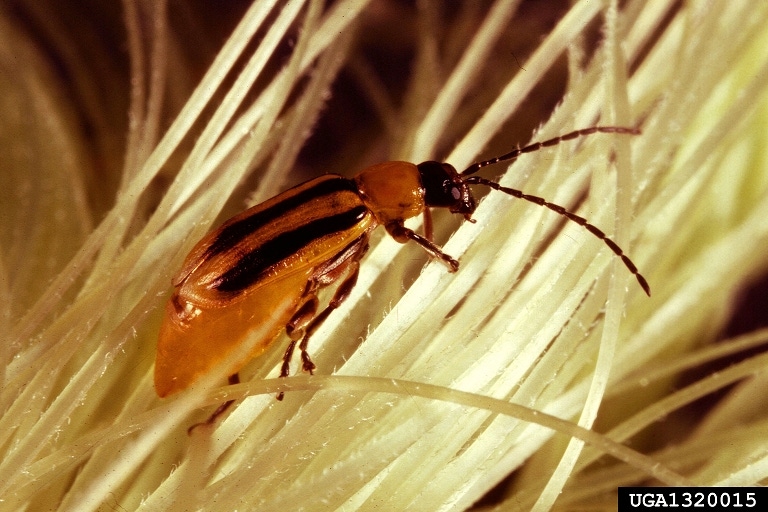June 11, 2012

The western corn rootworm season is progressing at an unprecedented pace, reports University of Illinois Professor of Entomology and Crop Sciences Extension Coordinator Mike Gray. Reports of severe injury to Bt corn that expresses the Cry3Bb1 protein targeted against corn rootworms have come in from western Cass County. In 2011, similar reports of injury to Bt hybrids expressing this protein surfaced in other north-central states, particularly in Iowa.
"Thus far, resistance to this protein in Illinois has not been confirmed," says Gray. However large numbers of western corn rootworm adults are visible in the whorls of plants in Cass County. Seed industry representatives confirmed that beetles were observed early last week, nearly a full month earlier than when they are usually first reported, around the 4th of July.
The plants were under intense moisture stress, the leaves were rolled tightly, and beetles were feeding on the epidermis of corn leaves. "This type of injury often occurs when beetle emergence is early and plants have not yet begun to shed pollen or produce silks," Gray says. The plants in the fields that were visited were not at this reproductive stage of development.
Roots were removed randomly from this field and from a nearby field that also had been planted to a Bt hybrid expressing the Cry3Bb1 protein. Roots from both fields exhibited feeding injury with more injury in the second field, although fewer beetles were observed there. Because adults were not as noticeable in the second field and emergence was just beginning in the first field, root feeding is expected to continue in both fields.
No lodging was observed, probably because the plants were short and the soil was hard and dry. "However, as root feeding continues and plants become taller, lodging should be expected, especially if storms with rain and winds materialize," says Gray.
On June 8, the plants that had been evaluated for root injury were checked for the expression of the Cry3Bb1 protein at the University of Illinois laboratory. All tested positive. This does not mean that a resistant western corn rootworm population has been confirmed in Illinois. The registrant of this technology has been notified and will conduct some follow-up investigations in these fields.
At this point, it is not clear why performance challenges of some Bt hybrids expressing this protein are continuing. However, farmers should remain vigilant during this growing season and report any performance issues with corn rootworm injury on their Bt hybrids.
Like the fields that had Bt performance issues last year, the fields in Cass County had been in continuous corn for many years (at least 10 consecutive years). Moreover, the same trait (Cry3Bb1) had been used since 2007 (six growing seasons). Under these conditions, the selection pressure for resistance development is increased markedly.
"It remains to be seen how the rest of this growing season will play out," says Gray. "For now, it makes sense to monitor this unfolding situation carefully and pay attention to the performance of Bt hybrids this season."
Longer term, it will be increasingly important to integrate management practices such as:
Rotation of corn with other crops
Rotation of Bt traits from season to season
Use of a non-Bt hybrid along with a soil insecticide at planting
Use of refuges when planting a Bt hybrid
You May Also Like




